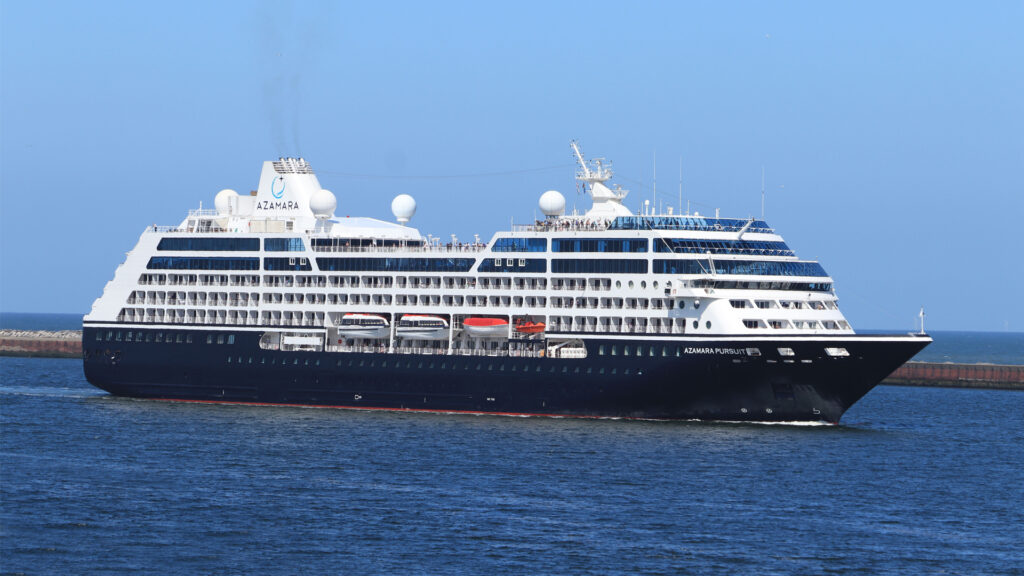By G. Spencer Myers
I recently boarded a cruise ship to sail around the south coast of Spain with stops in ports from Seville to Barcelona. When I arrived at my stateroom, six plastic bottles of water were neatly stacked on a shelf. When I left the ship for shore excursions, I was encouraged to take bottled water with me.
Cruise ships are noted for their hospitality, and everyone knows it’s important to stay hydrated, so this was a nice touch. Cruise ships are also noted for food. From buffets to lounge bars and poolside cafes to fine dining restaurants, every food option is available. At each meal or snack, beer and wine in a bottle are available.
Ever the environmentalist, I got to wondering what they did with all the empty containers. With cruise ships now transporting the population of small towns, the waste is enormous.

My ship, the Pursuit by Azamara, sailed with 664 passengers and a crew of over 300. The Icon, by Royal Caribbean, carries 10,000 passengers plus crew. Cruise ships have been estimated to release twice the amount of CO2 into the atmosphere per person than flying and staying in a four-star hotel.
One cruise ship can release as much CO2 as a million cars. One study revealed that the 218 cruise ships in Europe released four times more sulfur oxide than all of the cars in Europe. Cruise ships comprise only 1% of the world’s fleet, but they create 24% of the waste generated by ships in the ocean.
I dialed the front desk and was pleased to discover that an environmental officer is now required on cruise ships in Europe. Duarte, an articulate man of Polish descent in his 50s, was happy to meet with me and show me what they did with all those plastic and glass bottles. I was pleased to find that the captain can lose his license for failing to abide by the environmental regulations, so they listen to the environmental officer. He also said that regulations in Europe are much stricter than those in the United States.
So, what becomes of the thousands of containers that would otherwise clog landfills and end up in our air, water and soil? They are smashed into pieces or crushed flat. All of the glass bottles used on the Pursuit in one week can be crushed into boxes that make up only 3-4 cubic feet. The plastic bottles are squished into a box the size of 1 ½ cubic feet. They are offloaded at each port in recyclable cardboard boxes. From there they can be sent to recycling facilities by the local port officials.

Food waste is finely chopped and discarded, at least 12 miles from shore. Human waste is processed by non-aerobic digesters and treated before being discharged. All of this is good, but not standard practice by all cruise ships.
We flew to Europe. Airplanes are responsible for 2% of carbon emissions but far less than cruise ships. Although cruising for seven days is three times more carbon intensive than flying and staying in a hotel, there is good news. By 2030, European cruise ships will be required to hook up to electric outlets when in port to reduce emissions from diesel fuel and liquid natural gas that is often used while at sea. The Pursuit burns low-sulfur oil inside 12 miles from port and heavy oil outside, but it recycles the exhaust to heat boilers to keep carbon emissions to a minimum. In the works are fuel cells and battery propulsion.
Railroads emit fewer carbon emissions than trucks and ships. Although I drive an electric car, I took the train to and from my home in Boynton Beach to the Miami airport. In Portugal, the train took us from Porto to Lisbon, in comfort, where we boarded the Pursuit. The next time you plan a trip, think about your carbon footprint and leave the old gas guzzler in the garage.
G. Spencer Myers is an author of eco-political thrillers who lives in Boynton Beach. For more information and to read his blog, visit www.EcoBuzzBooks.com.
If you are interested in submitting an opinion piece to The Invading Sea, email Editor Nathan Crabbe at ncrabbe@fau.edu. Sign up for The Invading Sea newsletter by visiting here.



